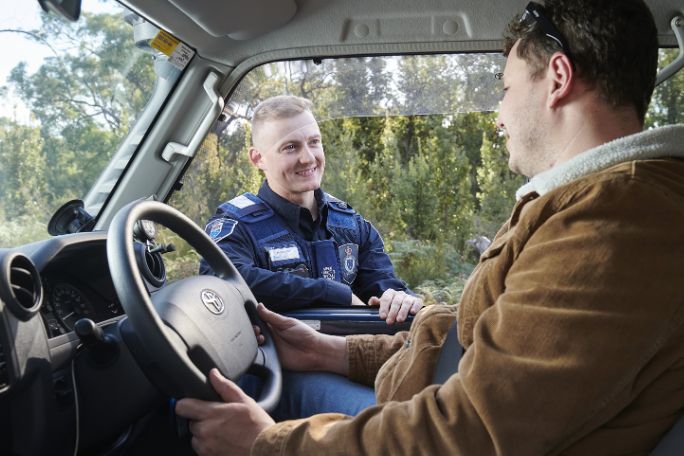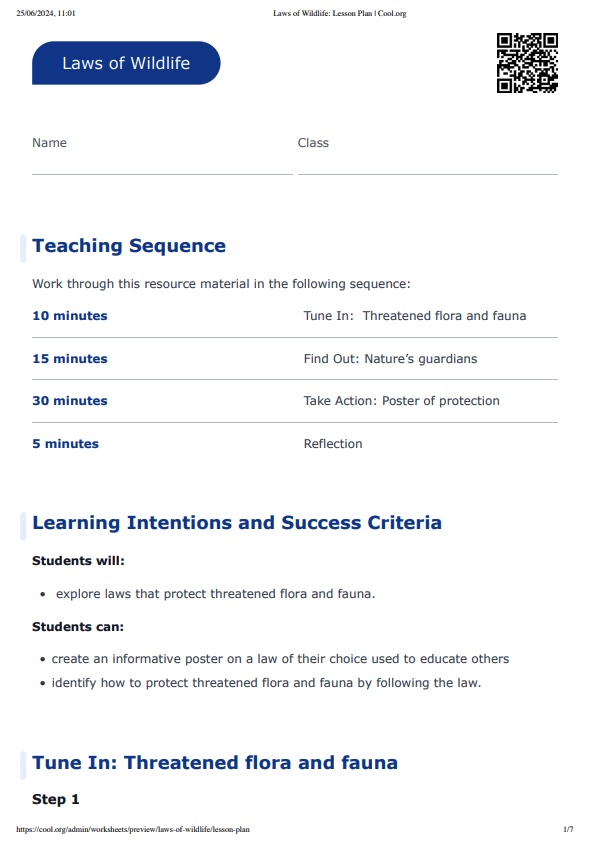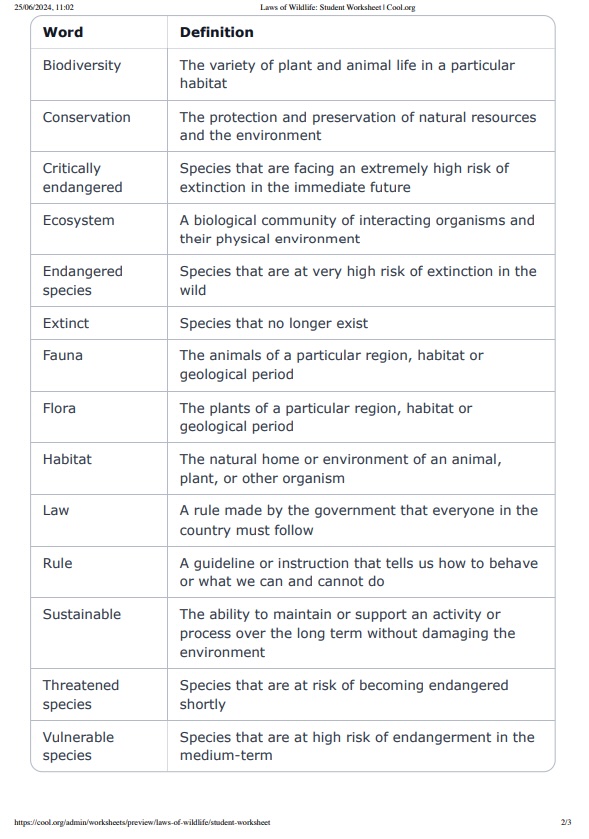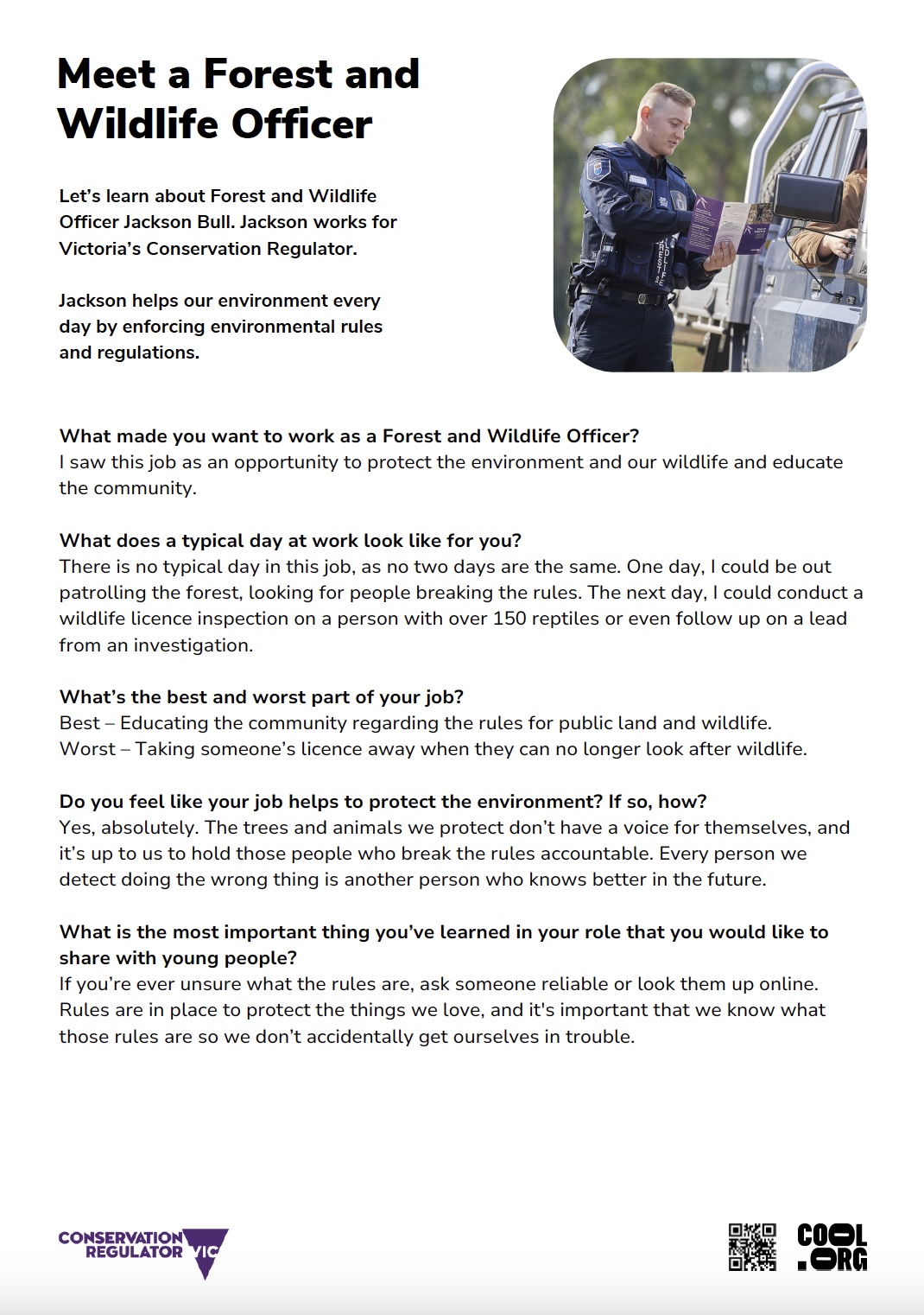Lesson summary
Students will develop their understanding of regulations that exist in Victoria to protect flora and fauna. They will work collaboratively to create an informative poster for a focus species of their choice.
Learning intentions:
Students will...
- explore laws that protect threatened flora and fauna.
Success criteria:
Students can...
- create an informative poster on a law of their choice used to educate others
- identify how to protect threatened flora and fauna by following the law.
Lesson guides and printables
Curriculum links
Select your curriculum from the options below.
Lesson details
Skills
This lesson is designed to build students’ competencies in the following skills:
- creative thinking
- critical thinking
- communication
- community engagement
- reflection
Curriculum Mapping
Australian Curriculum (v9.0) content description:
Year 3 and 4, HASS
- who makes rules, why rules are important in the school and/or the local community, and the consequences of rules not being followed (AC9HS3K06)
- the differences between “rules” and “laws”, why laws are important and how they affect the lives of people (AC9HS4K07).
Relevant parts of Year 3 and 4 HASS achievement standards: Students describe the importance of rules and people's contributions to communities. Students describe the importance and role of local government, community members and laws.
NSW Syllabus outcomes:
- describes the ways people, places and environments interact (GE2-1)
- examines differing perceptions about the management of places and environments (GE2-3).
General capabilities: Critical and Creative Thinking, Digital Literacy, Ethical Understanding, Literacy, Personal and Social Capability
Cross-curriculum priority: Sustainability
Level of teacher scaffolding: Medium - facilitate class discussion, explicit teaching and assistance with creation of posters.
UN Sustainable Development Goals
UN SDG 15: Protect, restore and promote sustainable use of terrestrial ecosystems, sustainably manage forests, combat desertification, and halt and reverse land degradation and halt biodiversity loss
- Target 15.5: Take urgent and significant action to reduce the degradation of natural habitats, halt the loss of biodiversity and, by 2020, protect and prevent the extinction of threatened species.
Resources Required
- Student Worksheet (one per student)
- Device capable of displaying audiovisual material
- Poster paper
- Markers, pencils and pens
Additional Info
This lesson has been developed in partnership with the Conservation Regulator, a government agency responsible for regulation of fire prevention, use of public land, wildlife and biodiversity. Through a combination of enforcement and education activities, the Conservation Regulator aims to maintain the health and heritage of these landscapes for future generations to enjoy.
Related Professional Learning
Using The Cool.org Act Framework in the Classroom - Primary
Quick Summary: This course will help you to empower students to take action on issues that are important to them, by offering a variety of strategies and tactics to facilitate meaningful action.





Welcome back!
Don't have an account yet?
Log in with:
Create your free Cool.org account.
Many of our resources are free, with an option to upgrade to Cool+ for premium content.
Already have an account?
Sign up with:
By signing up you accept Cool.org's Terms and Conditions(Opens in new tab) and Privacy Policy(Opens in new tab).